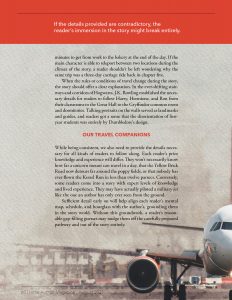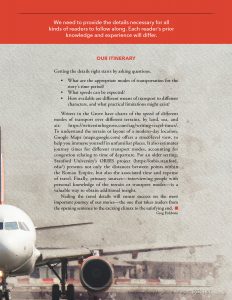A guide to determining travel time in your stories
An old scene ends. A new scene begins. And if the characters now find themselves in a different place, readers will usually just assume that time has passed and distances have been traversed.
But how far apart are places in the story? How long does it take to get between them? And what transport methods are available?
If a scene transition doesn’t include these details, and if teleportation isn’t an established option, readers will fill the gap with reasonable guesses. This is generally a good thing. Implying travel details, rather than describing them, can maintain a level of pacing that moves a story along.
But leaving too many details to the imagination may drive readers into jarring inconsistencies. Worse, if the details provided are contradictory, illogical, or unrealistic, the reader’s immersion in the story might break entirely.
Our Navigational Aids
As authors, we often create mental maps of our settings. But a mental train schedule and mental hourglass may also be required to maintain consistent time, space, and manner of travel.
Consistency is vital. If a character walks past the bakery during a five-minute commute from home to the office, it shouldn’t require fifteen minutes to get from work to the bakery at the end of the day. If the main character is able to teleport between two locations during the climax of the story, a reader shouldn’t be left wondering why the same trip was a three-day carriage ride back in chapter five.
When the rules or conditions of travel change during the story, the story should offer a clear explanation. In the ever-shifting stairways and corridors of Hogwarts, J.K. Rowling established the necessary details for readers to follow Harry, Hermione, and Ron from their classrooms to the Great Hall to the Gryffindor common room and dormitories. Talking portraits on the walls served as landmarks and guides, and readers got a sense that the disorientation of first-year students was entirely by Dumbledore’s design.
Our Travel Companions
While being consistent, we also need to provide the details necessary for all kinds of readers to follow along. Each reader’s prior knowledge and experience will differ. They won’t necessarily know how far a unicorn mount can travel in a day, that the Yellow Brick Road now detours far around the poppy fields, or that nobody has ever flown the Kessel Run in less than twelve parsecs. Conversely, some readers come into a story with expert levels of knowledge and lived experience. They may have actually piloted a military jet like the one an author has only ever seen from the ground.
Sufficient detail early on will help align each reader’s mental map, schedule, and hourglass with the author’s, grounding them in the story world. Without this groundwork, a reader’s reasonable gap-filling guesses may nudge them off the carefully prepared pathway and out of the story entirely.
Our Itinerary
Getting the details right starts by asking questions.
- What are the appropriate modes of transportation for the story’s time period?
- What speeds can be expected?
- How available are different means of transport to different characters, and what practical limitations might exist?
Writers in the Grove have charts of the speed of different modes of transport over different terrains, by land, sea, and air: https://writersinthegrove.com/tag/writing-travel-times/. To understand the terrain or layout of a modern-day location, Google Maps (maps.google.com) offers a street-level view, to help you immerse yourself in unfamiliar places. It also estimates journey times for different transport modes, accounting for congestion relating to time of departure. For an older setting, Stanford University’s ORBIS project (https://orbis.stanford.edu/) presents not only the distances between points within the Roman Empire, but also the associated time and expense of travel. Finally, primary sources—interviewing people with personal knowledge of the terrain or transport modes—is a valuable way to obtain additional insight.
Nailing the travel details will ensure success on the most important journey of our stories—the one that takes readers from the opening sentence to the exciting climax to the satisfying end.
Greg Fishbone








